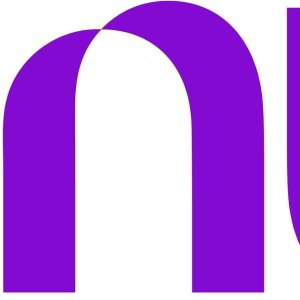Lana Delivers Financial Services to Gig Economy Workers

STORY INLINE POST
Q: What added value does Lana offer to clients?
A: Lana is a Spanish technology platform that arrived in Mexico two years ago. Originally, we were three people split between Spain, Chile and Mexico, though now we have grown. Our goal is to offer financial services through technology to sectors that are traditionally neglected in Latin America. We have chosen to begin with gig economy workers. We want to focus on two concerns related to this group. The first is the gap between gig economy workers and the requirements to access financial services from traditional financial institutions. The second is the decrease in gig economy workers’ purchasing power, which is caused by the number of intermediaries between the final user and the service provider.
Lana launched its first product in Mexico around one month ago but it has been operating in Chile for a longer period. Our roadmap will see us move into Peru, Argentina and Colombia after Mexico.
Q: What drove Lana to choose Mexico as one of the first countries to target?
A: There is a set of criteria that we must see in the country to consider it an attractive market. The most important is the size of the market that we can access. Our research showed that the gig economy worker population is growing at a constant and sustained rate across Latin America. The COVID-19 pandemic has increased this trend as more people are having to look for alternative means of income to supplement their lower wages or, in some cases, as their main source of income.
We also consider the regulatory environment in each country. In Mexico, the Fintech Law’s Eighth Transitory Article meant we had to look at other ways to become operational. We could either operate through a third party in the form of Banking as a Service, or we could apply for our operational license. We began to work toward both in parallel. We found a partner and have now released our product but we have also started the process to gain a license. In Chile, the economic requirement to apply for a license is stricter. There, you must have US$1 million in capital just to begin the process. This can be very difficult for many small companies. In Peru, regulatory demands are lighter and we are able to offer credits to gig economy workers there. The potential for profitability, including interest rates, GDP and other macro and micro variables must also be considered.
Q: What were the advantages of following both paths in parallel?
A: First, we had time to enter the market. Mexico is in a boom and it was important to develop our presence quickly. The first product we put out and is available today allowed us to get an understanding of what the market wanted through user feedback. We knew that we could not get the license very quickly, so we began to search for partners that we could work with. It was an interesting experience because it allowed us to be in a market that was not yet regulated but offered various possibilities, including the famous Eighth Transitory Article, which allowed a new company to explore the Fintech as a Service model. But being connected to a third party means that our movement is very restricted because the regulatory side is linked to that third party. Any additional service we wanted to add would depend on the third party.
The decision to also go for the license was therefore based on being completely autonomous and able to increase our margins. It would allow us to construct specific services outside of the third party and operate everything ourselves. Lana was the first company to present its license application to CNBV after the suspension of the licensing process had ended.
Q: Why did Lana choose to deliver services to gig economy workers in particular?
A: A large percentage of gig economy workers do not have a direct contract with their employer. This is the tip of the iceberg that generates the majority of difficulties in accessing traditional financing. Because the nature of the job means workers often cannot demonstrate a constant and recurrent salary, they cannot meet banks’ requirements. This lack of a contract generates other problems, like being unable to link themselves to government healthcare or loans for housing from INFONAVIT, for example. Our goal is to offer these types of features in the future.
Lana level of services can be perceived as a pyramid. The base of our service is a financial service that allows users to open fully-digital accounts from their cellphones, allowing them to make transfers to and from their account. The second level is that of payments, including bills like water, gas or phone services. We enable this automatic payment without cost or commission. In this second level, we aim to provide benefits in the future, including cheaper movie tickets and fuel coupons. The third level of the pyramid are financial services, like access to credit or healthcare. Our idea is to forward micro loans and then to offer a wide range of other services that cover the necessities of gig economy workers but to which they cannot gain access in traditional ways.
At the moment, we have two kinds of products in the market: B2C for individual users and B2B to connect with companies. Companies that work in the gig economy have different structures, mainly in the frequency at which they issue workers’ salaries. Payments are usually released weekly or daily. But the financial system charges for every payment made as salaries. This dramatically increases the cost associated with paying wages. Instead, Lana helps companies to dispense with these costs by making the payment peer-to-peer. Understanding the flow of money between companies and workers has allowed us to create a system structure that is finely adapted to the needs of the gig economy.
Q: How did COVID-19 impact the gig economy and how will this affect Lana’s growth?
A: There have been several effects on the gig economy. One is that ride-hailing dropped severely amid the restrictions on movement. To help workers, we offered loans through a partner, with very low interest rates to help them through the situation. On the other hand, food delivery apps saw a huge boost during quarantine and the number of gig economy workers increased as a result.
We have two strategies to take the product to market. One of those is B2B2C and, fortunately for us, the number of employers in the gig economy has generally grown during the pandemic. We expect growth to continue over the next months. We have just closed two contracts with last-mile companies because of growth during the last few months and the fact that the Buen Fin annual sale was done digitally. The second strategy is B2C. We want to offer lines of credit to users and other services that we know users want or need.
Lana is a technology platform offering financial services to traditionally neglected consumers in several Latin American countries. The company began supplying services to gig economy workers and has plans to expand.








 By Peter Appleby | Journalist and Industry Analyst -
Tue, 10/13/2020 - 12:30
By Peter Appleby | Journalist and Industry Analyst -
Tue, 10/13/2020 - 12:30














